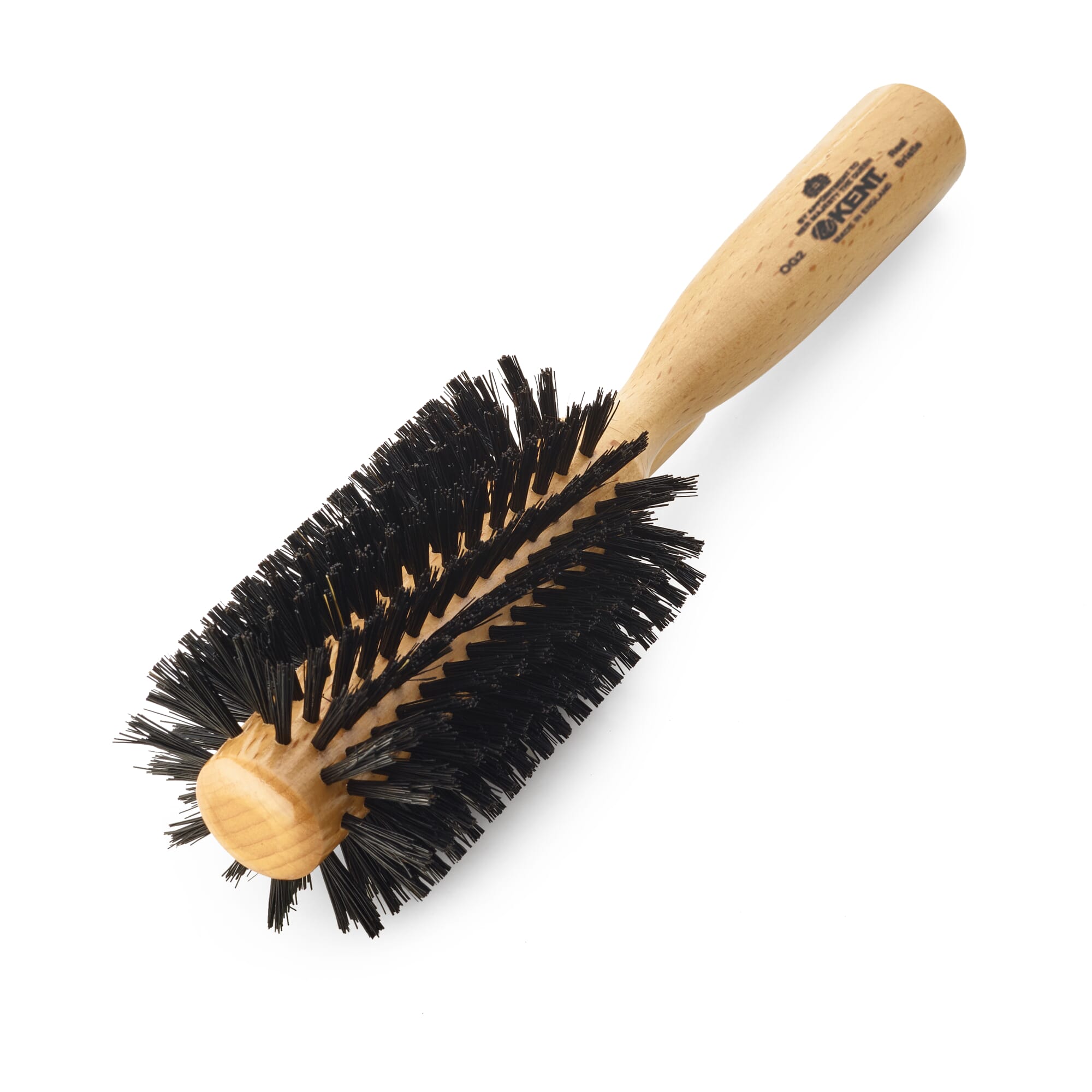Prettyboy
∞
- Joined
- Jul 5, 2021
- Posts
- 11,125
- Reputation
- 37,382
Overview
Type 1: Straight
Type 2: Wavy
Type 3: Curly
Type 4: Kinky (coily)
Going from straight to curly hair
Going from curly to straight hair
The Andre Walker Hair Typing System
This thread is based on the Andre Walker Hair Typing System, whicht is a classification system for hair types created in the 1990s by Oprah Winfrey's stylist Andre Walker. It was originally created to market Walker's line of hair care products but has since been widely adopted as a hair type classification system for barbers. It categorizes hair into 4 main types depending on it's texture:

Natural geographical distribution of the main hair types
This thread is based on the Andre Walker Hair Typing System, whicht is a classification system for hair types created in the 1990s by Oprah Winfrey's stylist Andre Walker. It was originally created to market Walker's line of hair care products but has since been widely adopted as a hair type classification system for barbers. It categorizes hair into 4 main types depending on it's texture:
- 1: straight
- 2: wavy
- 3: curly
- 4: kinky (coily)
- a: fine
- b: medium
- c: coarse

Density
Hair density refers to the number of hairs that a person has on their head. The more hairs a person has, the higher that person’s hair density.
Porosity
Hair porosity is a measure of the amount of moisture that a person’s hair can absorb. Hair porosity depends on how many gaps or tears are present in the cuticle layer. The cuticle is the outer layer of the hair, which protects it from wear and tear.
Hair density refers to the number of hairs that a person has on their head. The more hairs a person has, the higher that person’s hair density.
Porosity
Hair porosity is a measure of the amount of moisture that a person’s hair can absorb. Hair porosity depends on how many gaps or tears are present in the cuticle layer. The cuticle is the outer layer of the hair, which protects it from wear and tear.
Natural geographical distribution of the main hair types
- Straight hair is a typically Mongoloid feature, found in most of Asia (+ Native Americans), but also somewhat common in Eastern Europe
- Wavy hair could be considered a typical Caucasoid trait, commonly found throughout Europe and in the Indian subcontinent
- Curly hair is mostly found in Africa among with the Mediterranean region
- Kinky (Afro) hair is a typical Negroid feature, found in Sub-Saharan Africa and in other populations among the Equator, like Micronesians & Melanesians

Type 1: Straight
Men who have straight hair have lesser problem in maintaining them. Their hair is sleek and smooth.
1a) Straight, fine



1b) Straight, medium


1c) Straight, coarse


1a) Straight, fine
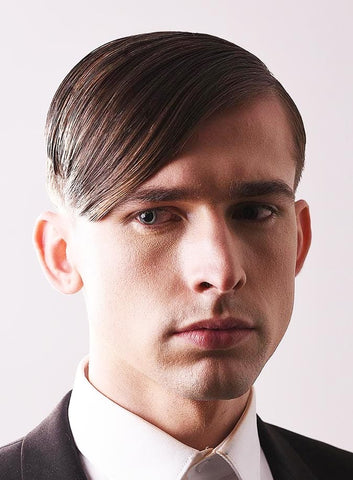
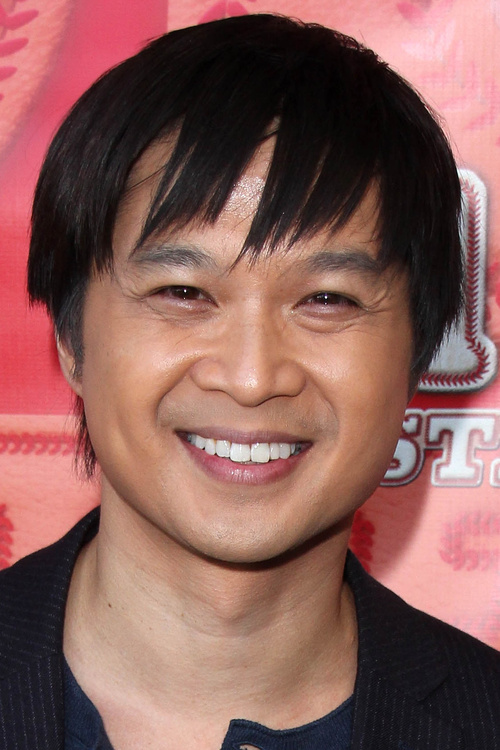

This hair is the straightest of the straight, fine and and thin. It's very difficult to obtain volume as your hair wants to lie down. Oils from your scalp easily travel up the hair shaft giving this type of hair good shine and a smooth texture. Hair is easy to control but can be difficult to obtain textured hairstyles. Most commonly found among Eastern Asians.
1b) Straight, medium
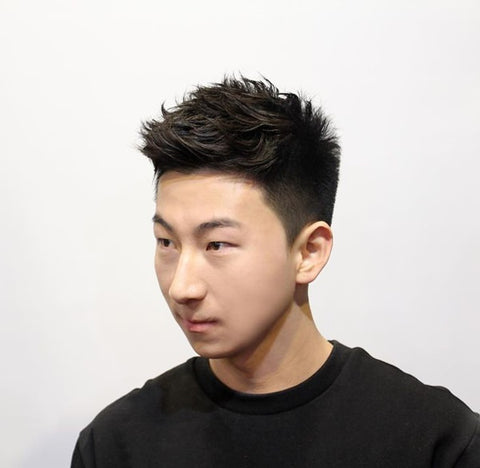

Straight with some bends. This hair type is very straight but there tends to be more density of hair growth than 1A. This creates a thicker look that has less shine to it. Oils from the scalp still travel easily to the tips of hair but there is more hair to absorb the oil. This gives a sheen and shiny look to hair that doesn't appear greasy. Volume is easier to obtain with products but hair does not naturally have volume.
1c) Straight, coarse
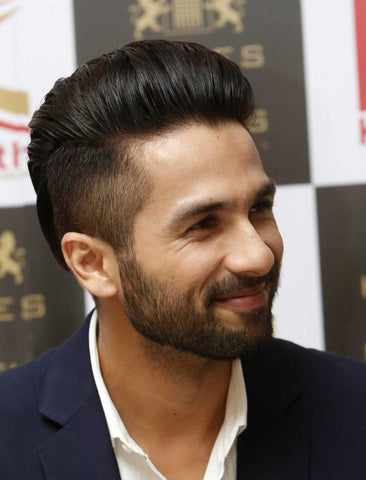

Straight hair with a coarser texture. Hair still grows straight but is thick, coarse, but still has some shine to it naturally. This hair type will have natural volume making iasier to style than other Type 1 hair sub-classes. Hair will naturally grow outwards at short lengths but will begin to fall forward once hair gets long enough. When hair falls flat against scalp, there is no curl.
Type 2: Wavy
Men with wavy hair can identify their hair type by noticing whether there are bumps that are formed on their hair. If there are light waves that are formed when you open the hair or the hair is not in one direction then they can classify as wavy hair type.
2a) Wavy, fine


2b) Wavy, medium


2c) Wavy, coarse


2a) Wavy, fine
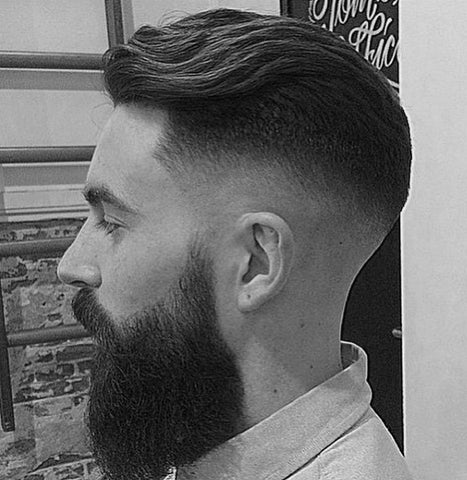

Wavy and fine. Hair grows with an extended "S" type pattern giving it a slight wave. Texturized hairstyles are easy to pull off, but it helps if you add texture during haircuts. Hair isn't very coarse so it can be a little heavy, using heavier products can weigh down your hair and make it difficult to get desired volume. Using pre-stylers and a blow dryer can greatly enhance volume without causing frizziness as this hair type has the highest oil content of the Type 2 hair type.
2b) Wavy, medium
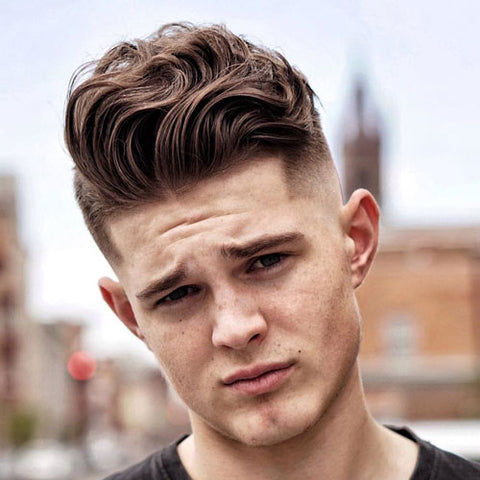

Wavy with a slightly more defined S-shape. This hair type has a more aggressive "S" shape to it's wave and tends to have little hooks at the ends where the next wave starts to form. The hair is more coarse than 2a and can make this hair type difficult to style and work with when using budget products. Hair will have natural texture to it. Blow drying this type will make it frizzy and is prone to fly-aways. High grade products are required to control and keep this hair type healthy.
2c) Wavy, coarse
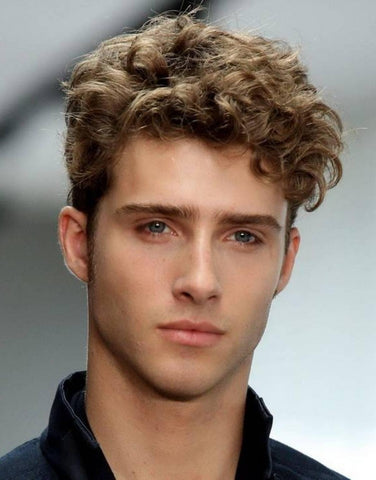

Wavy with well-defined S-shaped, wider waves. Resistant to styling and tends to be frizzy. t looks like a series of half circles chained together going back and forth. Sometimes the curls will spiral around themselves. This hair type is extremely difficult to control and is the most coarse of the Type 2 hair types. In most cases, people with this type of hair will keep their hair short (under 3 inches) because it's difficult to manage beyond that length. Or they allow it to naturally grow and have a natural textured hairstyle. Many people with this hair type will have type 3A in parts of their hair (in a way it's an intermediate hair type between wavy and curly).
Type 3: Curly
Curly or coiled hair type can be identified with heavy curls that are formed in patches. Curly hair needs maintenance as it is difficult to comb the hair. So, they have to be well kept and in proper shape.
3a) Curly, loose


3b) Curly, tight


3c) Curly, corkscrews


An S or Z shape that springs back into shape when stretched.
3a) Curly, loose
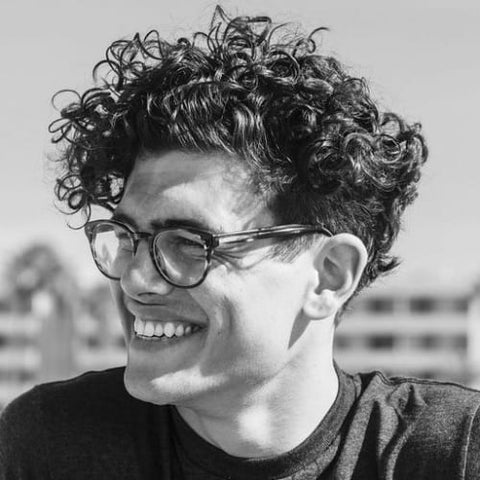

Hair has loose curls that grow outwards and away from the scalp. Once hair reaches a certain length the hair will fall down as it's heavy but the curls aren't coiled enough to keep growing up. Thick and coarse, it can be difficult to style this type of hair without a straightener and heavy hold products. Usually needs oils to stay hydrated. Many people with this hair type have a mix of type 3A and 2C hair.
3b) Curly, tight


Tight and springy curls. Tightly coiled curls that grow outward. Hair is extremely thick but still has noticeable texture. Hair is often characteristics of people that identify as Bi-racial, Samoan, islander, etc. Very difficult to style in a comb over or something like that. Usually people with this hair type will keep hair really short because it's difficult to maintain. Growing hair out looks like a loose afro.
3c) Curly, corkscrews

An S or Z shape that springs back into shape when stretched.
Type 4: Kinky (coily)
Kinky hair type is when the hair is wavy and curly at the same time.
4a) Kinky, loose coils


4b) Kinky, zig-zagging coils


4c) Kinky, tight coils


4a) Kinky, loose coils
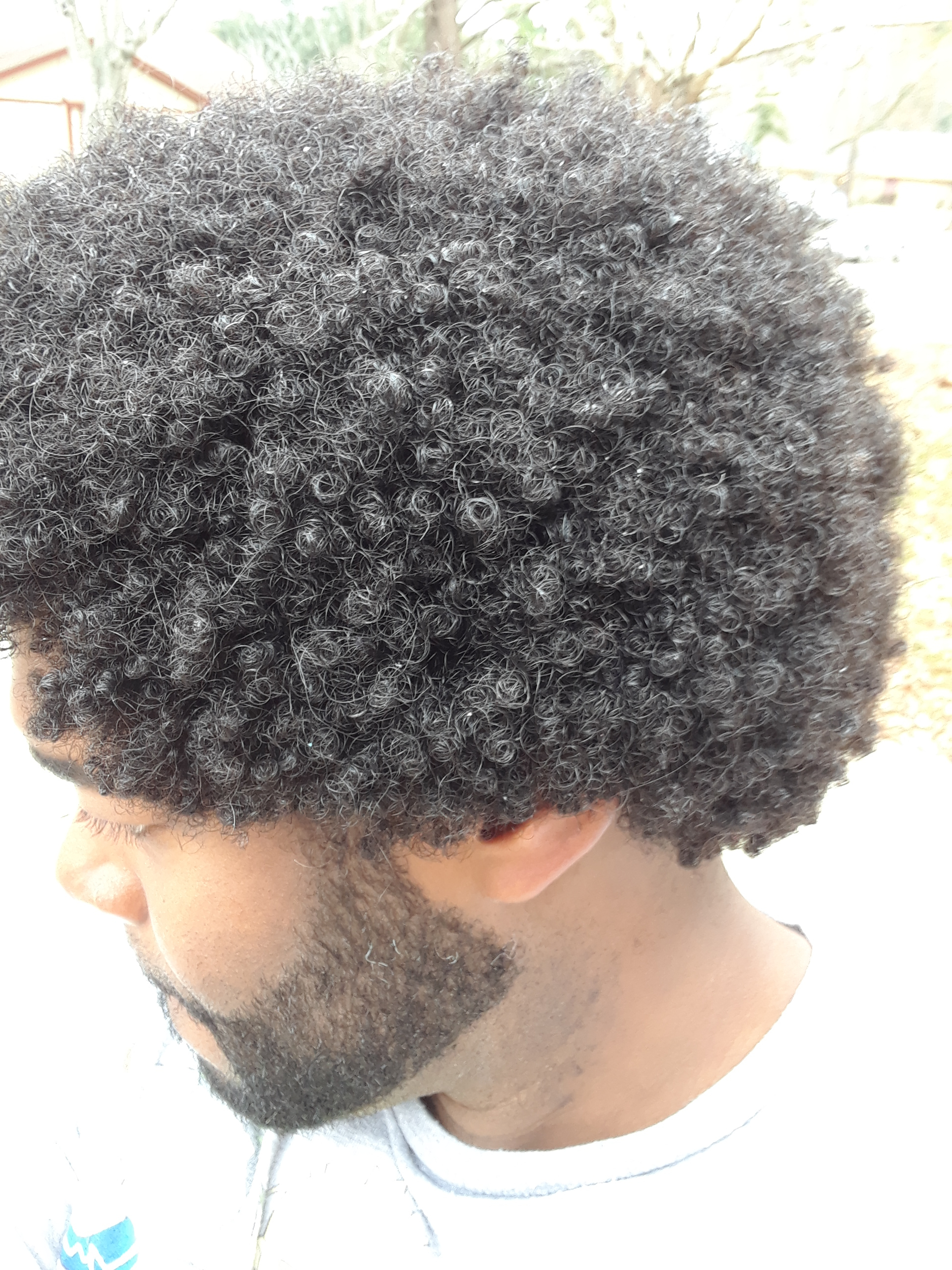

Dense hair type where the hair is coiled into a S shape. Curls are not too big but form loose curls. Coarse and wiry. The shape of the hair prevents natural hair oils from the scalp to travel more than two inches up the hair shaft. This makes the hair brittle but thick. Hair grows very densely. You can pull on the ends of it and straighten it out, but it will bounce right back to it's original shape. Highly resistant to any sort of desired styling. Hair grows outward and will stand up on its own, but once hair gets long enough it will begin to droop down. The 4A type hair also has the maximum moisture retention capacity when compared with other types of kinky hair.
4b) Kinky, zig-zagging coils
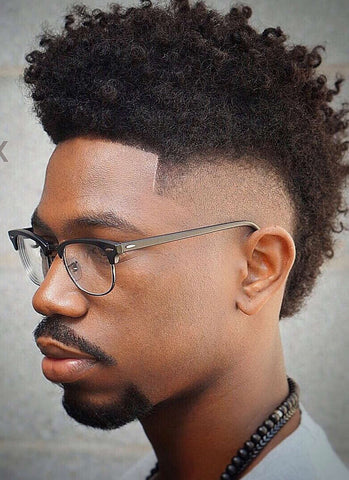

Hair is in a "Z" shape and can grow upward and outward for many many inches. This hair type is extremely thick, dense, and brittle. This hair type can look 80% less long than it actually is because it's so tightly coiled. Unlike other type of hair, it is not explicitly curled but has sharp bends which give it curly wire feel.
4c) Kinky, tight coils
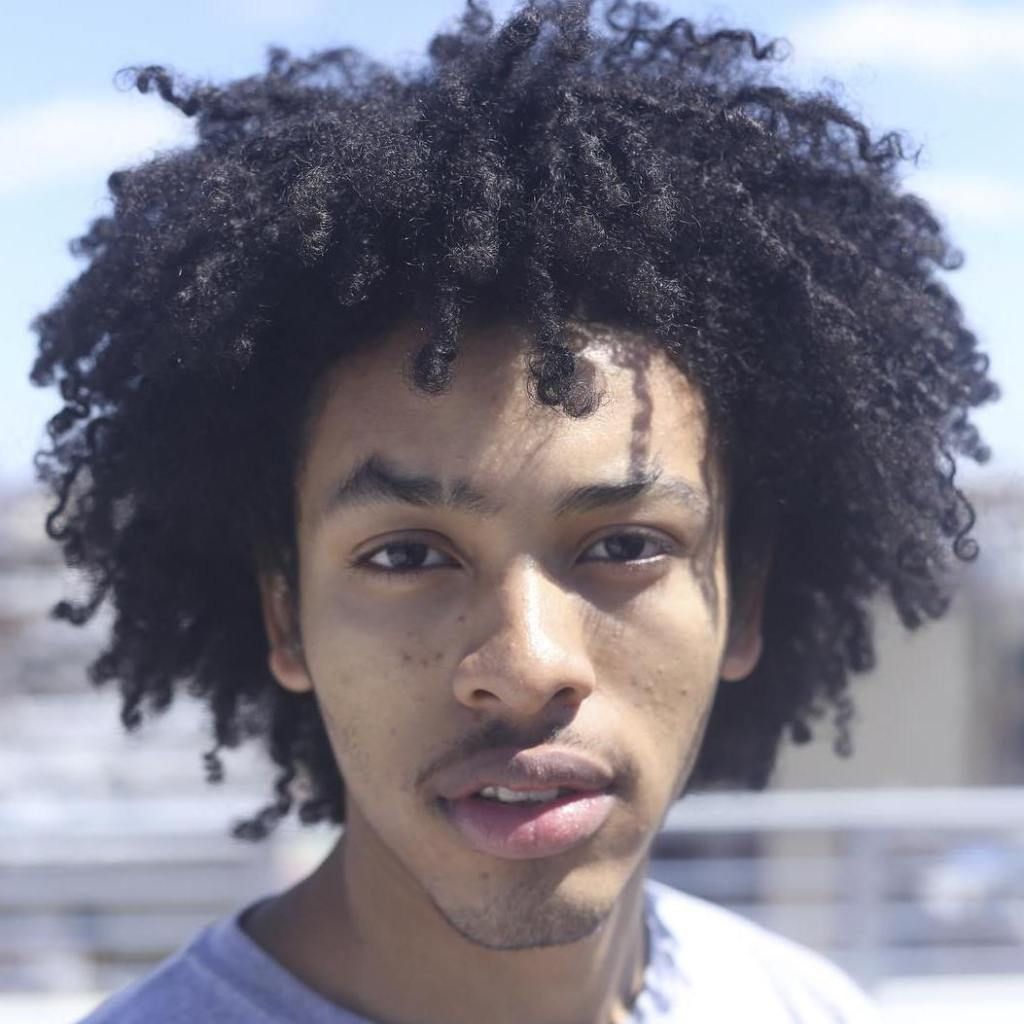

These curls hare dense and are tightly packed. This type of hair is usually thick and have a lot of volume. These are often confused with 4B type hair as they look similar, the only difference is that, in 4C the hair are even more closed packed but does not have a 'z-shaped patter. The shrinkage volume is very high; therefore, 4C hair appears very small that it’s actual length.
Going from straight to curly hair
Short term solution a)
1. Start with wet hair and lightly towel dry until it is damp.
2. Work a generous amount of heat protectant spray through hair.
3. Work sea salt spray through hair from roots to ends. It adds texture and hold to create natural curls.
4. If you have a diffuser attachment on your blow dryer, put it on. This spreads out the blast of air from a single stream through multiple channels to enhance curl and reduce frizz. If there is no diffuser and you can remove the nozzle, do that to create a wider stream of air.
5. Blow-dry while scrunching and lifting hair with some pressure. When hair starts to feel dryer, add more salt spray and keep drying while scrunching and lifting. When hair feels dryer again, add more salt spray to the areas where hair isn’t as curly and continue to dry. You can also wrap strands of hair around the finger and blast with a little heat to create individual curls.
6. When hair is dry, finish with a pliable pomade that enhances texture to hold curls in place.
Short term solution b) curling iron
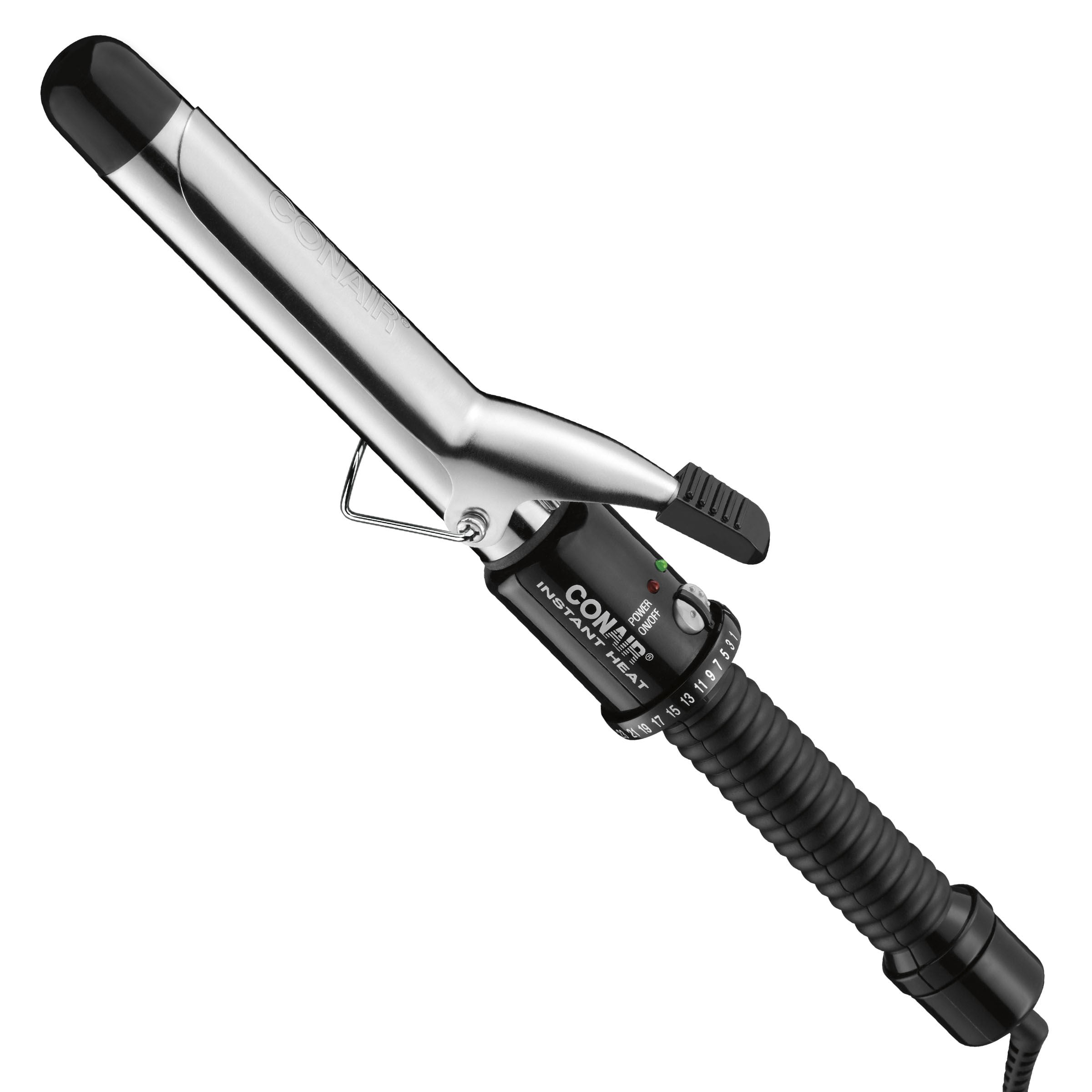
https://www.lorealparisusa.com/beauty-magazine/hair-style/hairstyle-trends/how-to-use-a-curling-iron
Long term solution - perm
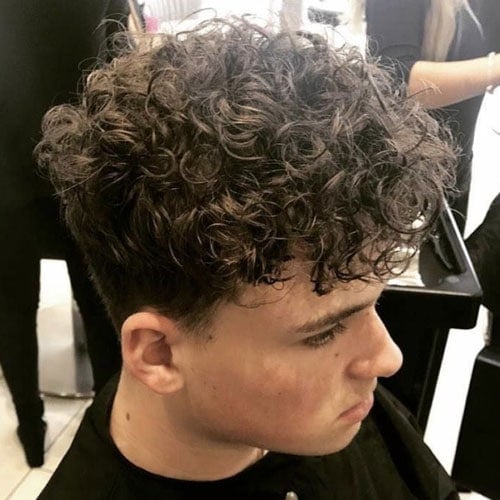
You should ask for one at your barber.
Or do it at home:
https://www.wikihow.com/Perm-Your-Hair
1. Start with wet hair and lightly towel dry until it is damp.
2. Work a generous amount of heat protectant spray through hair.
3. Work sea salt spray through hair from roots to ends. It adds texture and hold to create natural curls.
4. If you have a diffuser attachment on your blow dryer, put it on. This spreads out the blast of air from a single stream through multiple channels to enhance curl and reduce frizz. If there is no diffuser and you can remove the nozzle, do that to create a wider stream of air.
5. Blow-dry while scrunching and lifting hair with some pressure. When hair starts to feel dryer, add more salt spray and keep drying while scrunching and lifting. When hair feels dryer again, add more salt spray to the areas where hair isn’t as curly and continue to dry. You can also wrap strands of hair around the finger and blast with a little heat to create individual curls.
6. When hair is dry, finish with a pliable pomade that enhances texture to hold curls in place.
Short term solution b) curling iron

https://www.lorealparisusa.com/beauty-magazine/hair-style/hairstyle-trends/how-to-use-a-curling-iron
Long term solution - perm

You should ask for one at your barber.
Perms work by using chemicals to change hair texture, either creating waves or curls. Traditionally, a stylist will wrap hair in rods before putting perm lotion on to set the curl. After letting the lotion sit, stylists rinse it out, dry hair as much as possible, and use a neutralizer to halt the perming process.
If you decide to get a perm, you should prepare to be at the salon for at least two and a half hours. After you get a perm, how long it lasts depends mainly on how long your hair is. For short, often-cut hair, they can last at least three to four month. With long hair, when the roots grow in, the roots drop on the head and then they just have the wave at the ends. That can last from six months to eight months.
If you decide to get a perm, you should prepare to be at the salon for at least two and a half hours. After you get a perm, how long it lasts depends mainly on how long your hair is. For short, often-cut hair, they can last at least three to four month. With long hair, when the roots grow in, the roots drop on the head and then they just have the wave at the ends. That can last from six months to eight months.
Or do it at home:
https://www.wikihow.com/Perm-Your-Hair
Going from curly to straight hair
Short term solutions:
Blow dry + brush
Flat iron

Hot brush
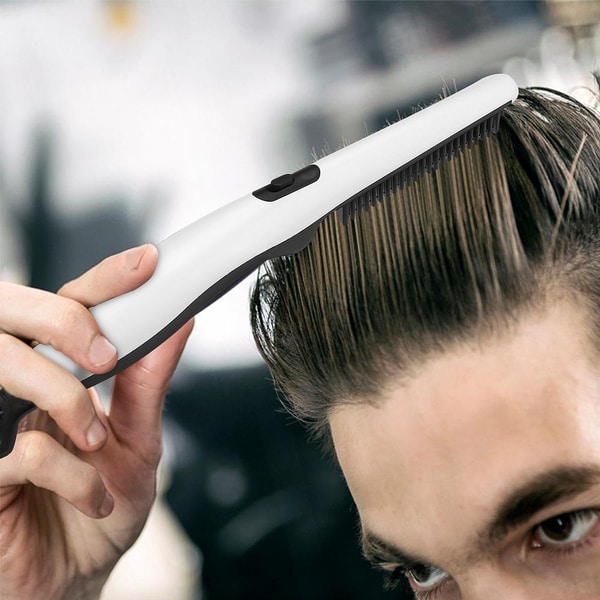
Also called a straightening brush, this styling tool is literally a heated hairbrush. The hot brush is quickly gaining popularity because it is easy to use, affordable, and cuts down on styling time because it dries and styles hair at the same time. The only requirement for a hot brush is medium length hair, which is especially easy for guys with curly hair thanks to the longer length of coiled hair.
Using a hot brush is as easy as brushing your hair. Start with damp hair coated by a heat protectant spray and start brushing, getting as close to the root as possible. Don’t worry about getting burned because the bristle layer prevents the heated element from making contact with the skin.
Similar to blow drying, start at the front of the head, focusing on the part of hair that is most visible. Dry and straighten hair by combing it backwards and then over to each side. Finish by combing the sides and the back until dry.
Now that hair is straight and dry, work in your favorite hair product. Straight hair may even last a second day.
Long term solution:
Keratin treatment
Blow dry + brush
Blow drying hair straight is a popular method because it uses tools that most people already have. How long it takes depends on how long and thick hair is as well as how detailed you are. For every day, most guys can get this done in 5-10 minutes. Getting ready for special events can take longer.
To blow dry hair straight, start with damp hair. Brush and detangle hair and apply heat spray. If your dryer has a concentrator nozzle, use it. This attachment goes from a tube to a narrow rectangle, making it easier to dry hair section by section.

Dry the front of hair first by pulling a small section of hair along the forehead up with the brush. With the nozzle about half an inch away from hair, dry hair from roots to tips. Repeat the process with the remaining sections of hair. For the back of the head, comb hair flat to the scalp and aim the blow dryer down onto it. This straightens hair without adding volume.
When hair is all the way dry, blast it with cold air to set the style. Now it’s time for your favorite pomade. If product doesn’t have enough hold for your hair, lock the look in place with hair spray. Modern versions of hair spray leave hair more moveable and touchable. Hold the can about a foot away from the head and spray a light coating all over.
To blow dry hair straight, start with damp hair. Brush and detangle hair and apply heat spray. If your dryer has a concentrator nozzle, use it. This attachment goes from a tube to a narrow rectangle, making it easier to dry hair section by section.

Dry the front of hair first by pulling a small section of hair along the forehead up with the brush. With the nozzle about half an inch away from hair, dry hair from roots to tips. Repeat the process with the remaining sections of hair. For the back of the head, comb hair flat to the scalp and aim the blow dryer down onto it. This straightens hair without adding volume.
When hair is all the way dry, blast it with cold air to set the style. Now it’s time for your favorite pomade. If product doesn’t have enough hold for your hair, lock the look in place with hair spray. Modern versions of hair spray leave hair more moveable and touchable. Hold the can about a foot away from the head and spray a light coating all over.
Hair brush
The opinion on what brush to use while straightening hair really varies. A brush needs to be able to grab and pull hair. Start with what you have and if that’s not working, try one of these:
- Vented bush
The vented brush is designed for blow drying with vents that allow hot air to flow through the brush to decrease drying time. The ball-tipped nylon bristles massage the scalp and detangle hair. This can also be a every day brush.

- Paddle brush
The paddle brush gets its name from the ping pong paddle-like shape. The larger area gives a great scalp massage. The brush can also be used to straighten hair but the size may it make it more awkward to use than a smaller brush. A paddle brush with boar bristles will pull hair straight better than one with only nylon bristles.

- Boar bristle brush
A boar bristle brush is a must have grooming tool for men. The stiff bristles scratch the scalp, distribute natural oils through hair, and help blow dry hair with a smooth finish. Boar bristle brushes are also great for beards.

For most guys, any blow dryer will work. Anything over 1800 watts is plenty to dry short and medium length hair. It should have multiple speeds, a cold shot, and a concentrator attachment is a bonus.
Flat iron

For stubborn locks, straightening hair with a flat iron can be easier than blow-drying with a brush. A flat iron has plates on both sides that heat up. Simply clamp a section of dry hair between the plates at the roots and work the tool down to the tips.
Flat irons should be used on dry hair. Watch the heat settings to protect hair. Thinner, straighter hair can use a lower setting while thicker and curlier hair requires more heat. And always use a heat protectant product first.
For men, the many sizes that flat irons come in are helpful. For shorter and medium length hair, a 1/2″ or 1″ flat iron will work. For long hair, a wider flat iron will speed up the process of flat ironing hair. Some models feature longer plates that allow larger sections of hair to be straightened as well.
Flat irons should be used on dry hair. Watch the heat settings to protect hair. Thinner, straighter hair can use a lower setting while thicker and curlier hair requires more heat. And always use a heat protectant product first.
For men, the many sizes that flat irons come in are helpful. For shorter and medium length hair, a 1/2″ or 1″ flat iron will work. For long hair, a wider flat iron will speed up the process of flat ironing hair. Some models feature longer plates that allow larger sections of hair to be straightened as well.
- 120-150C° (250-300F) – Fine, thin or bleached hair
- 150-190C° (300-375F) – Normal hair, wavy hair
- 190-200C° (375-400F) – Thick hair, curly hair
Ceramic
Titanium
Ceramic flat irons are the most affordable option. Ceramic is a smooth surface that won’t snag hair and distribute heat evenly. Ceramic doesn’t get as hot as as tourmaline or titanium so it is better for fine to normal hair but may not work for thick or curly hair.
Tourmaline
Tourmaline is a semi-precious, crystal silicate material that is ground to create a smooth coating. It produces negative ions that smooth frizz, flyaways, and static. Heat distribution of tourmaline is the best and can straighten the hair with less heat and fewer passes over hair. Many flat irons combine ceramic and tourmaline.
Tourmaline
Tourmaline is a semi-precious, crystal silicate material that is ground to create a smooth coating. It produces negative ions that smooth frizz, flyaways, and static. Heat distribution of tourmaline is the best and can straighten the hair with less heat and fewer passes over hair. Many flat irons combine ceramic and tourmaline.
Titanium
Titanium flat irons are metal and heat up fastest, get the hottest, and are the most durable. This is what professionals use and can also make sense for men with very thick or curly hair who frequently straighten it.
Hot brush

Also called a straightening brush, this styling tool is literally a heated hairbrush. The hot brush is quickly gaining popularity because it is easy to use, affordable, and cuts down on styling time because it dries and styles hair at the same time. The only requirement for a hot brush is medium length hair, which is especially easy for guys with curly hair thanks to the longer length of coiled hair.
Using a hot brush is as easy as brushing your hair. Start with damp hair coated by a heat protectant spray and start brushing, getting as close to the root as possible. Don’t worry about getting burned because the bristle layer prevents the heated element from making contact with the skin.
Similar to blow drying, start at the front of the head, focusing on the part of hair that is most visible. Dry and straighten hair by combing it backwards and then over to each side. Finish by combing the sides and the back until dry.
Now that hair is straight and dry, work in your favorite hair product. Straight hair may even last a second day.
Long term solution:
Keratin treatment
The straightening keratin treatment is also commonly called a Brazilian blowout. Similar to a perm, chemicals are applied to the hair and it is straightened with a flat iron. A keratin treatment grows out, so lasts from three to six months. All you need for this is a minimum of two-inch-long hair but longer is better.
There is a lot of talk about whether or not the Brazilian blowout contains formaldehyde. Many formulas claim to be formaldehyde-free but that is not entirely true. They may not contain formaldehyde but it is created when the chemicals are heated. Not to worry, though. Formaldehyde is a gas so as long as you are in a well-ventilated salon, there is minimal risk. The real risk is for people frequently working with formaldehyde.
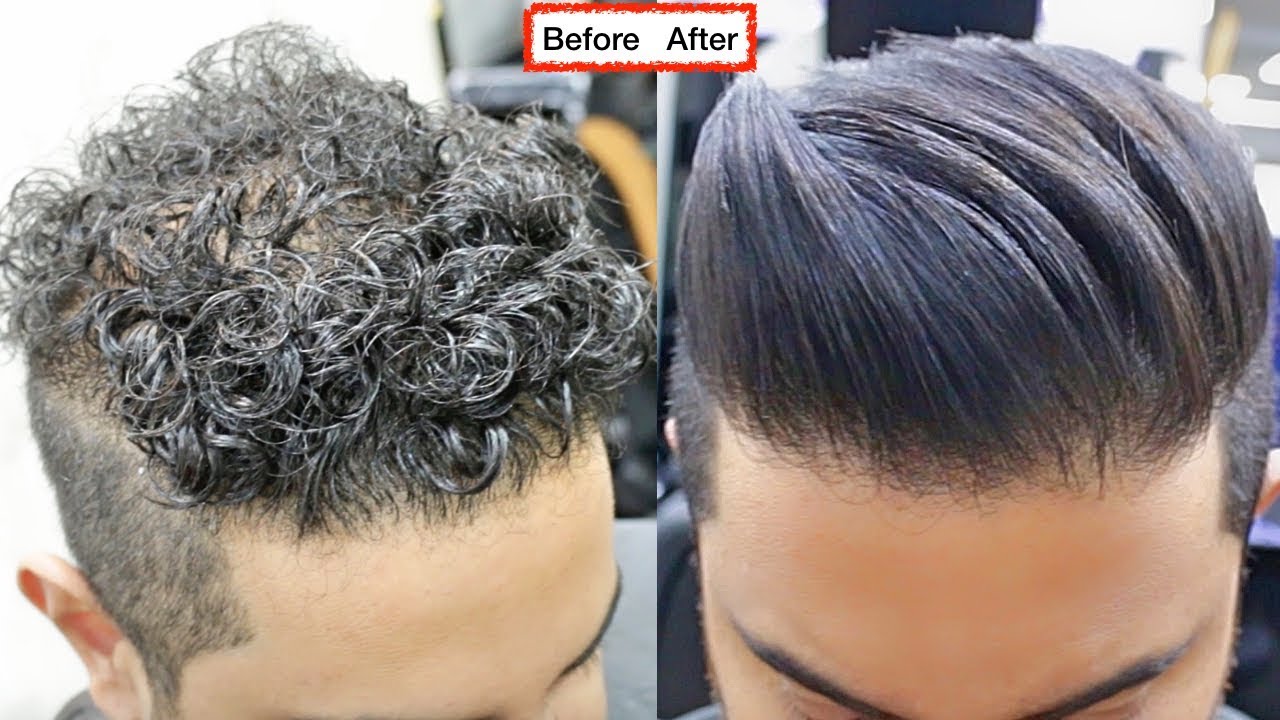
A keratin treatment is best done by professionals. First, hair is blown dry and straightened, then apply the treatment and let it sit. Afterward, hair will flat ironed straight and you’ve got a whole new look. Afterward, hair should be left alone for three days because any styling may set in the hair.
Sulfate-free shampoo must be used afterwards to maintain the straight hair for the longest time possible.
There is a lot of talk about whether or not the Brazilian blowout contains formaldehyde. Many formulas claim to be formaldehyde-free but that is not entirely true. They may not contain formaldehyde but it is created when the chemicals are heated. Not to worry, though. Formaldehyde is a gas so as long as you are in a well-ventilated salon, there is minimal risk. The real risk is for people frequently working with formaldehyde.

A keratin treatment is best done by professionals. First, hair is blown dry and straightened, then apply the treatment and let it sit. Afterward, hair will flat ironed straight and you’ve got a whole new look. Afterward, hair should be left alone for three days because any styling may set in the hair.
Sulfate-free shampoo must be used afterwards to maintain the straight hair for the longest time possible.
@Preoximerianas @MoeZart @Lev Peshkov @BucketCrab @AscendingHero @deepweb1298 @looksmaxxer234 @PYT @thecel @Frank Jack @astatine @Gargantuan @MaxillaMaxing @looksmaxpro @Biiyo03 @Elvisandreaa @Aqua @noodlelover @Pantherus @WontStopNorwooding




